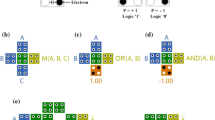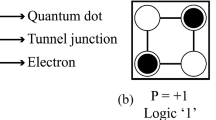Abstract
We present a novel built-in self-test (BIST) architecture for high-performance circuits. The proposed approach is especially suitable for embedding precomputed test sets for core-based systems since it does not require a structural model of the circuit, either for fault simulation or for test generation. It utilizes a twisted-ring counter (TRC) for test-per-clock BIST and is appropriate for high-performance designs because it does not add any mapping logic to critical functional paths. Test patterns are generated on-chip by carefully reseeding the TRC. We show that a small number of seeds is adequate for generating test sequences that embed complete test sets for the ISCAS benchmark circuits.
Instead of being stored on-chip, the seed patterns can also be scanned in using a low-cost, slower tester. The seeds can be viewed as an encoded version of the test set that is stored in tester memory. This requires almost 10X less memory than compacted test sets obtained from ATPG programs. This allows us to effectively combine high-quality BIST with external testing using slow testers. As the cost of high-speed testers increases, methodologies that facilitate testing using slow testers become especially important. The proposed approach is a step in that direction.
Similar content being viewed by others
References
V.D. Agrawal and T.J. Chakraborty, “High-Performance Circuit Testing using Slow-Speed Testers,” Proc. International Test Conference, 1995, pp. 302-310.
P. Bardell, W. McAnney, and J. Savir, Built-in Test for VLSI. Pseudorandom Techniques, New York, NY: John Wiley, 1987.
K. Chakrabarty, B.T. Murray, and J.P. Hayes, “Optimal Zero-Aliasing Space Compaction of Test Responses,” IEEE Transactions on Computers, Vol. 47, pp. 1171-1187, November 1998.
K. Chakrabarty, B.T. Murray, and V. Iyengar, “Built-in Pattern Generation for High-Performance Circuits using Twisted-Ring Counters,” in Proc. IEEE VLSI Test Symposium, 1999, pp. 22-27.
K. Chakrabarty, B.T. Murray, and V. Iyengar, “Deterministic Built-in Pattern Generation for High-Performance Circuits using Twisted-Ring Counters,” IEEE Transactions on VLSI Systems, Vol. 8, pp. 633-636, October 2000.
K.-T. Cheng, S. Devadas, and K. Keutzer, “A Partial Enhanced-Scan Approach to Robust Delay-Fault Test Generation for Sequential Circuits,” in Proc. International Test Conference, 1991, pp. 403-410.
C. Fagot, P. Girard, and C. Landrault, “On using Machine Learning for Logic BIST,” in Proc. International Test Conference, 1997, pp. 338-346.
I. Hamzaoglu and J.H. Patel, “Test Set Compaction Algorithms for Combinational Circuits,” in Proc. International Conference on Computer-Aided Design, 1998, pp. 283-289.
S. Hellebrand, H.G. Liang, and H.J. Wunderlich, “A Mixed-Mode BIST Scheme Based on Reseeding of Folding Counters,” in Proc. International Test Conference, 2000, pp. 778-784.
S. Hellebrand, B. Reeb, S. Tamick, and H. Wunderlich, “Pattern Generation for a Deterministic Scheme,” in Proc. International Conference on Computer-Aided Design, 1995, pp. 88-94.
International Technology Roadmap for Semiconductors, ITRS, http://notes.sematech.org.ntrs/PublNTRS.nsf, 1999.
V. Iyengar and K. Chakrabarty, “Precedence-Based, Preemptive and Power-Constrained Test Scheduling for System-on-a-Chip, “in Proc. IEEE VLSI Test Symposium, 2001, pp. 368-374.
G. Kiefer and H. Wunderlich, “Using BIST Control for Pattern Generation,” in Proc. International Test Conference, 1997, pp. 347-355.
A. Krstic, K.-T. Cheng, and S.T. Chakradhar, “Testing High Speed VLSI Devices using Slower Testers,” in Proc. IEEE VLSI Test Symposium, 1999, pp. 16-21.
H.K. Lee and D.S. Ha, “On the Generation of Test Patterns for Combinational Circuits,” Tech. Report No. 12.93, Department of Electrical Engineering, Virginia Tech., 1993.
S.M. Reddy, I. Pomeranz, and S. Kajihara, “On the Effects of Test Compaction on Defect Coverage”, in Proc. IEEE VLSI Test Symposium, 1996, pp. 430-435.
N.A. Touba and E.J. McCluskey, “Synthesis of Mapped Logic for Generating Pseudorandom Patterns for BIST,” in Proc. International Test Conference, 1995, pp. 674-682.
Y. Zorian, E.J. Marinissen, and S. Dey, “Testing Embedded-Core Based System Chips,” in Proc. International Test Conference, 1988, pp. 130-143.
Author information
Authors and Affiliations
Rights and permissions
About this article
Cite this article
Swaminathan, S., Chakrabarty, K. On Using Twisted-Ring Counters for Test Set Embedding in BIST. Journal of Electronic Testing 17, 529–542 (2001). https://doi.org/10.1023/A:1012872706123
Issue Date:
DOI: https://doi.org/10.1023/A:1012872706123




